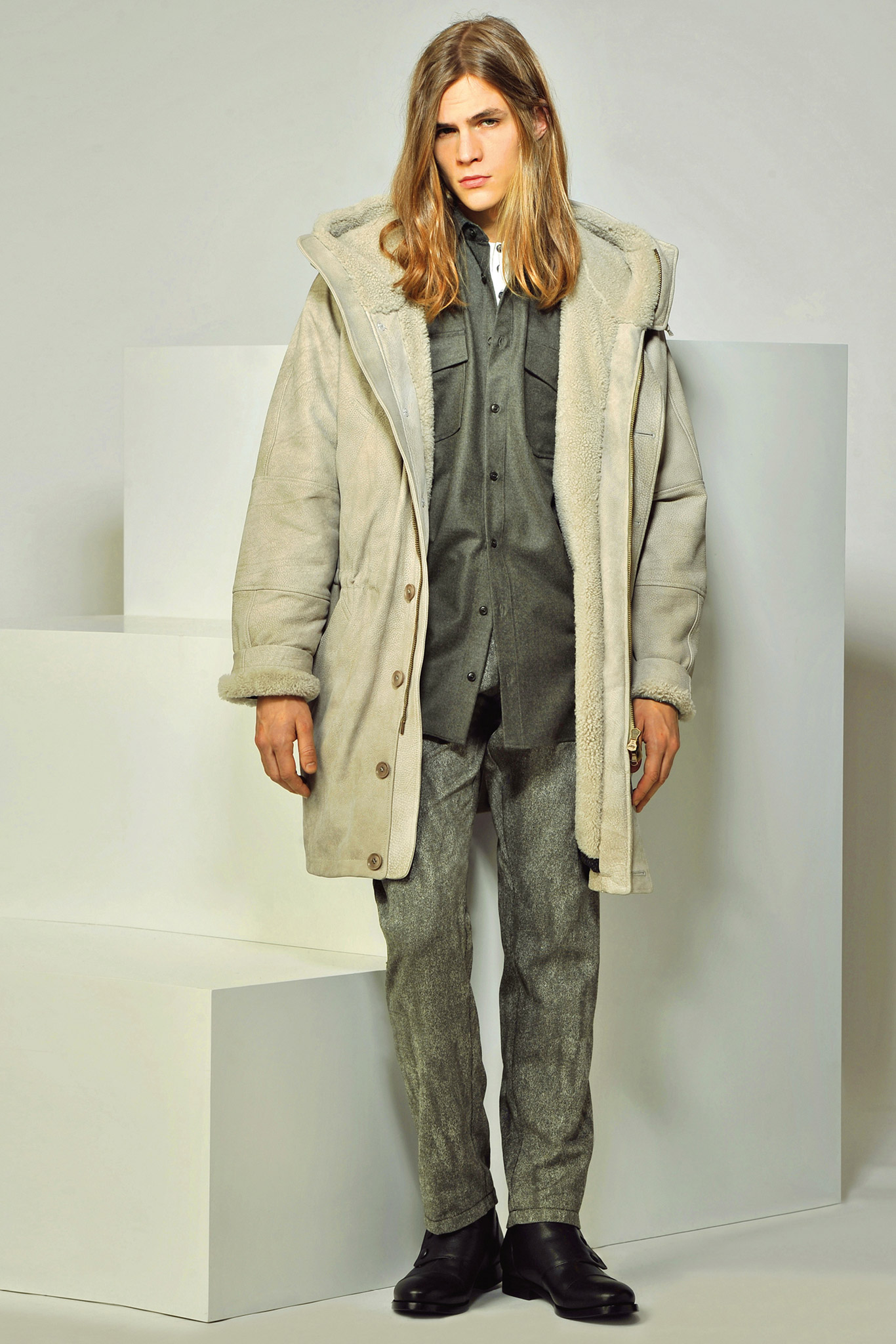
Its attitude toward financial traceability apart, Switzerland is not a nation particularly noted for relaxedness. And yet under designer Pablo Coppola and CEO Frédéric de Narp, the nation’s joint-with-Akris best-known fashion brand—a 164-year-old shoe manufacturer—is loosening up into something pretty appealing. For his second official menswear season at Bally, Coppola did justice to his surname by turning to cinema for inspiration: “a lot of Wes Anderson, and specifically The Royal Tenenbaums,” he said. There were no terry-cloth sweatbands, but most of the collection was either literally or spiritually in accord with Anderson’s world: weasel fur, beanie-teamed beige suiting, and a quirky ski-lift-print silk shirt—a Swiss touch, along with city-ready hiking boots best for hiking from cab to elevator. Then there were “some crazy pieces that we threw in for no reason,” said Coppola, like a yellow and gray reversible ostrich-skin mac—nice on the rack, but probably best kept out of the rain.
Bally’s bread and butter used to be high-grade leather dress shoes, exemplified by its top-of-the-line Scribe collection. Those were here—notably in a rubber-soled goodyear-welted form for the first time—and they remained as handsome as a captain of industry could want. Yet while those shoes are central to the brand, it’s fascinating how they now provide only the carbohydrates in its diet. Coppola, in a pair of unsullied Alpine white Bally trainers, reported that Bally now sells more informal shoes than formal. Speaking about the clothes in this collection, he noted, “I like when a young guy looks a bit retro and an old guy looks a bit young. But it is not overly directional. I am not here to say what they should do or wear; they should do whatever they want.” As that shoe detail suggests, the balance—even for heritage brands such as Bally—is tipping toward the tastes of the younger generation and those more venerable geezers who wish to ape them. Coppola is compellingly laissez-faire about his own creative process, but he can be: He is the mirror of a new breed of luxury consumer that desires rich materials unpretentiously presented.












